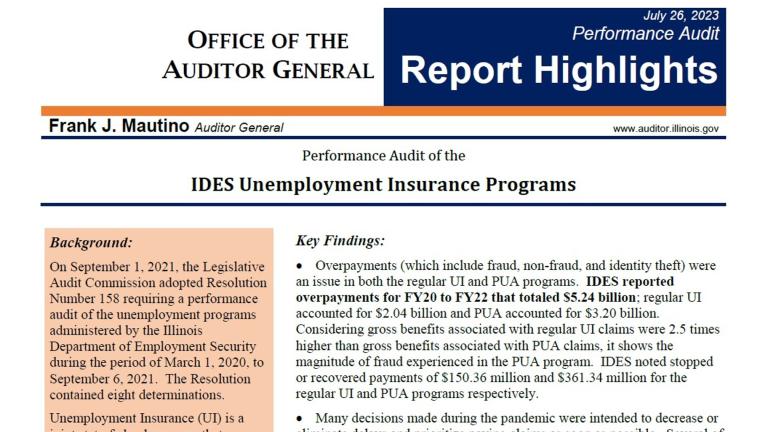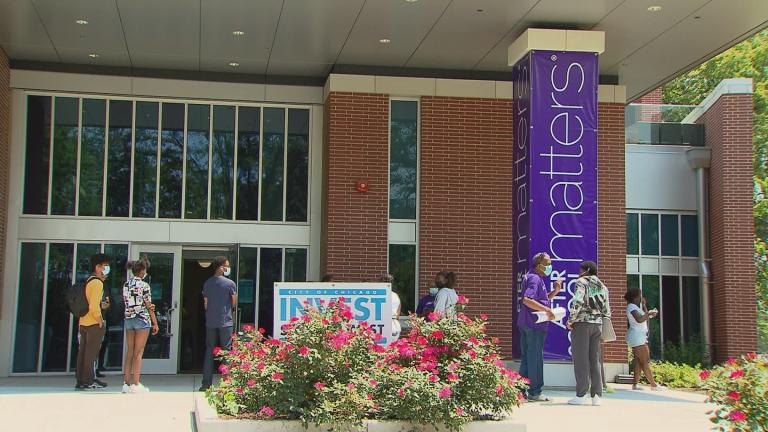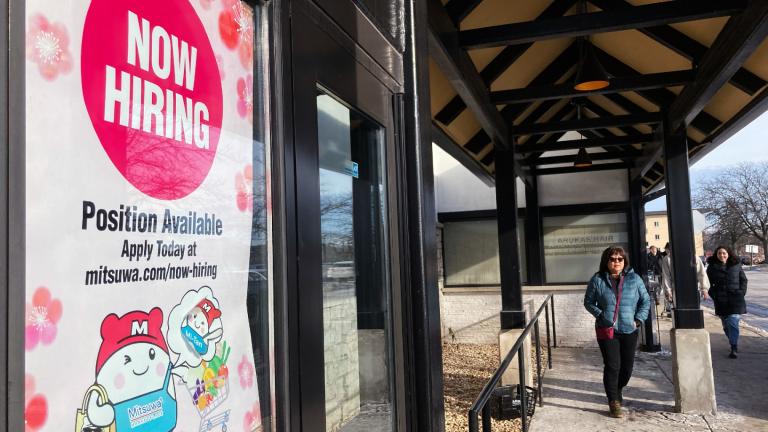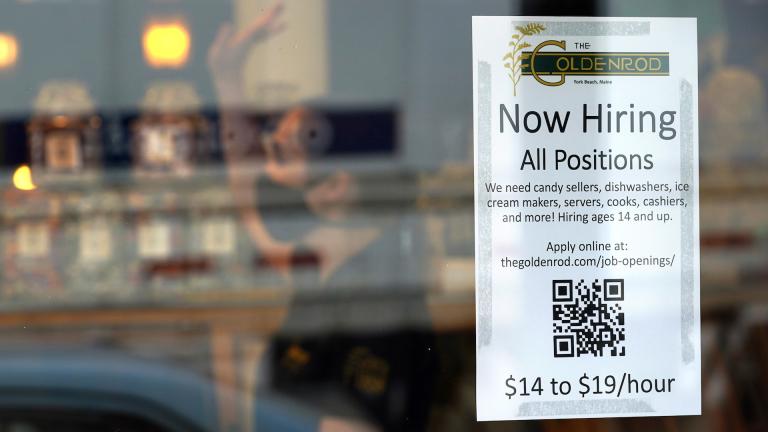Video: Joining “Chicago Tonight: Latino Voices” to discuss the report are Jack Wuest, executive director of the Alternative Schools Network; Joel Rodriguez, a community organizer with the Southwest Organizing Project; and Brandie Knazze, the commissioner of Chicago’s Department of Family and Support Services. (Produced by Emily Soto)
Employment levels in Chicago and beyond have rebounded since the COVID-19 pandemic, but a new report has found teens and young adults across the city, particularly those of color, are still struggling to find consistent work.
The report, published Wednesday by the University of Illinois Chicago's Great Cities Institute, found that communities are not all recovering from the pandemic at the same pace, as youth joblessness rates in Chicago outpace the rest of Illinois and the country as a whole.
“Black and Latino youth and young adults in Chicago continue to have higher jobless and out-of-school-and-jobless rates compared to White Chicagoans,” the report states, “highlighting the importance of implementing targeted programs to promote more equitable employment opportunities for youth and young adults.”
According to the report, there were tens of thousands of teens and young adults in Chicago between the ages of 16-24 who are both out of school and jobless in 2022 — the year this study examined.
Chicago remains worse off than Illinois and the U.S in joblessness for Black and Latino 16- to 19-year-olds and 20-to-24-year-olds, the report found. The highest percentages of joblessness in Chicago, recorded at 92.8%, were found around the South and West side neighborhoods of Pilsen, Bridgeport, McKinley Park, Fuller Park and Back of the Yards.
The Far South Side of Chicago in particular had a large cluster of high jobless rates ranging from 86.7% to 92% for 16-to-19-year-olds, the report found.
“The big picture takeaway for me is that as the economy has partially rebounded from COVID-19-induced recession, there’s a lot of unevenness,” said Matt Wilson, a lead researcher and study author from the Great Cities Institute.
While Chicago as a whole fared worse than other areas, Black teens in the city are also far more likely to be out of both school and work than their White counterparts, according to the report.
For instance, the jobless rate for 16-19 year old Black teens nearly doubled in one year, jumping from 9.4% in 2021 to 17.5% in 2022. And while the rate of out-of-school and jobless Black Chicagoans aged 20-24 dropped significantly during that time, from nearly 40% down to just below 30%, that rate is still well above the rates for similarly-aged Latino (15%) or White (8%) residents.
Wilson said that while some of these numbers are improving back toward pre-pandemic levels, the jobless and out-of-school rates even then were extremely uneven throughout the city.
“We’re almost socialized to think that it’s normal that the disconnection rate for Black 20-24 year olds hovering around 40%,” he said. “And then we say ‘Oh 30%, wow that’s a great change,’ but really it’s so much higher than for the White and Latino populations.”
The report also highlighted the work of youth employment programs such as One Summer Chicago, which both connected youth participants with jobs and helped reduce their likelihood for arrests.
Jack Wuest, executive director of the Alternative Schools Network, which commissioned the report, said its findings show the “desperate need” from these youth who want to work when jobs are available.
“We’re facing labor shortages in the country,” he told WTTW News, “so getting these kids jobs helps strengthen the economy — making them workers who understand what it is to work — it makes the neighborhoods safer and it gives the kids themselves a lot of confidence from having a job. It’s a big deal.”
Wuest is calling on the state legislature to approve $300 million in additional funding for youth employment to expand job opportunities across Chicago and Illinois.
“It’s just inexcusable,” he said, “when we have the resources, to allow these kids to languish and now move forward.”
Note: This article was published May 15, 2024, and updated with video May 16, 2024.








